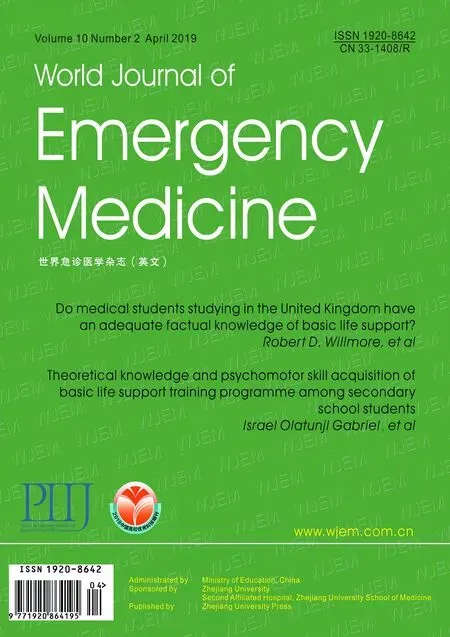Perceived effectiveness of infection control practices in Laundry of a tertiary healthcare centre
Raman Sharma, Ashok Kumar, Vipin Koushal
Department of Hospital Administration, PGIMER, Chandigarh, India
Hospital management in modern milieu has become patient oriented and good patient outcome is a result of effective and ef ficient medical care along with provisions of hygienic food, clean linen, safe environment, congenial atmosphere and good interpersonal relationship.[1]Laundry is one such important support service which ensures prevention as well as containment of hospital infections and is also a determining factor for maintenance of good image of a hospital.[2]
Being an important component of patient care, an analysis was done to assess the mini mum health and safety requirements that institute meets to provide clean linen and minimize infections to patients as well as to healthcare staff. The assessment tool was developed based on laundry services management guidelines of Centres for Disease Control and Prevention (CDC),Occupational Safety and Health Administration (OSHA),National Institute for Occupational Safety and Health(NIOSH), Association for the Advancement of Medical Instrumentation, American Institute of Architects Facility Guidelines Institute, and National Accreditation Board for Hospital and Healthcare Providers (NABH), Indian Public Health Standards (IPHS), KayaKalp.[3-5]
This assessment tool is divided into 3 components having 12 indicators which have 65 parameters. These three components reflect how these three elements are integrated into the practice of the laundry processing facility. Though, this tool is not the ideal measure for assessing the quality of healthcare laundry operations;however, healthcare facilities should interpret their hospital policies and how these elements are integrated into practice of the laundry processing facility for further improvement. Such sort of studies are lacking in India.The greater majority of all healthcare laundry processing operations do utilize universal precautions during linen processing in their facility. These three components reflect minimum requirements that institute should meet to provide clean linen and minimize infections in the hospital.
The first and foremost component in laundry processing is infection prevention, where the role of the laundry is to remove the pathogens from the linen thereby rendering them hygienically clean. While there is not an evidence based measurement for “hygienically clean”textiles, this feat is accomplished by containing the pathogens during transport, avoiding cross contamination between soiled and clean, and a consistent thorough wash process. Secondly, producing hygienically clean linen is a process in fluenced by multiple factors, and adjustment in one area requires an offsetting adjustment in another.Given the increase in automation and the essential nature of each of the components, continuous monitoring of the processes is the key for ensuring quality outcomes.Mechanisms should be in place to monitor water quality, effective agitation, time, chemicals and heat,as each plays a significant role in the process. The third component pertains to ensure the culture of safety;a dual faceted concept. In the hospital it is essential that employees are protected in an environment where infectious disease is a legitimate risk in addition to basic workplace safety. The laundry too must have policies and practices in place to protect the worker from these dual concerns.
The scores were calculated based upon where each parameter is assigned zero points for no compliance, five points if there is partial compliance and ten points for full compliance. The scores of each parameter were added up to calculate the compliance to each component andoverall scores to identify the compliance level health care facility has achieved. After completing each parameter,scores of each component were calculated and a score of 93.8% for safety measures, 85.4% were achieved for infection control and 72.0% for quality assurance (Table 1).

Table 1. Scores of each component calculated
The assessment provides that laundering is one of the important aspects of healthcare services and healthcare organizations must have a dynamic infection control team,robust surveillance system for quality assurance, adequate healthcare personnel to disseminate evidence-based knowledge; hallmark for improving patient care services.
Funding:None.
Ethical approval:Not needed.
Conflicts of interest:No any benefits have been received from a commercial party related directly or indirectly to the study.
Contributors:RS led the design of the study and data collection, and drafted the manuscript. All authors contributed to the interpretation of the results and the critical revision of the manuscript.
 World journal of emergency medicine2019年2期
World journal of emergency medicine2019年2期
- World journal of emergency medicine的其它文章
- Keeping nephrotic syndrome on the emergency department edema differential: A case report
- Instructions for Authors
- A patient presenting painful chest wall swelling:Tietze syndrome
- Central nervous system manifestations due to iatrogenic adrenal insufficiency in a Ewing sarcoma patient
- Can an 8th grade student learn point of care ultrasound?
- The “PAWPER-on-a-page”: Increasing global access to a low-cost weight estimation system
